(v12.13.14)
Art, Architecture and Design
This article spotlights a particular building or some other aspect of Columbus design. I welcome your comments, corrections and additions. Please share your experience and perceptions of these uniquely Columbus projects.
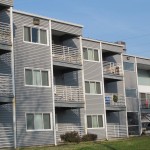 Sycamore Place Apartments
Sycamore Place Apartments
- Built: 1982
- Address: 222 Sycamore Street (2nd and Sycamore)
- Design Architect: Charles Gwathmey (Gwathmey Siegel & Associates – NYC)
- Design Associate: Jacob Alspector (Gwathmey Siegel & Associates – NYC)
- Design Team: Lynn Bensel, Glen Fries, William Garbus, Dean Marchetto, Joseph Ruocco (Gwathmey Siegel & Associates – NYC)
- Landscaping: Glen Fries (Gwathmey Siegel & Associates – NYC)
- General Contractor: Deluxe Homes
Sycamore Place is a HUD-subsidized public housing project for the elderly. Remarkably this and another public housing project for families in Columbus were both designed by the noted architectural firm Gwathmey Siegel & Associates. HUD normally would have insisted on a no frills design but the fact that the design fees were paid by the Cummins Foundation Architecture Program resulted in a still simple cost-efficient building but allowed for additional features such as balconies and a level of privacy not found in typical public housing units. HUD restrictions do not normally allow funding for housing to be designed to meet particular local needs which results in a cookie cutter approach. Another HUD complex for families was built shortly after this project also designed by Charles Gwathmey. It is not known if there are any other public housing projects around the country designed by notable architects. The intention of the Columbus projects was to show that a public housing project can be an asset to the community if it is well-designed, well-maintained and well-managed. The hope was that it would transform the image of public housing. While that probably hasn’t happened we have seen a nationwide shift from large high-rise units to smaller more tenant friendly construction.
Sycamore Place is a single compact 3-story building articulated by a series of setbacks giving the building a stairstep appearance. On the exterior this arrangement allows for private balconies which also provide a privacy baffle for the bedroom windows avoiding direct views from one unit into another. On the interior, the setbacks provide a staggered corridor and allows extra space at each apartment entryway with natural light and views at each end. For a public housing project there is an unusual emphasis on privacy and respect for the tenants. There are 24 1-bedroom apartments including 3 that are handicapped accessible. There were only 14 parking spaces set aside but it was assumed that many of the elderly and somewhat impoverished residents would not have private transportation. The complex is on the Columbus city bus line.
At the main entrance is a porte-cochere (covered driveway for dropping off or picking up residents and guests). This enters into a public space with the management office, and what is basically a 3-story community room with amenities for the tenants. The 2nd floor had a tenant lounge area, kitchenette and a balcony overlooking 2nd street. The 3rd floor contained a laundromat and a barber-beauty shop.
The building was built using simple wood frame construction with a concrete block foundation, asphalt shingles and painted aluminum windows. Standard, stick-built home building technology was augmented by prefabricated framing and standardized off-the-shelf building components resulting in a low-cost, high-value community development. The siding is horizontal cedar clapboards stained a light grey color. Window trim, doors and outside benches are painted white. Carpets and slate are found on interior floors. Units are heated and cooled with electric heat pumps. The building contains an elevator and two sets of stairs, corridors are wide with handrails installed.
In another unusual touch for a public housing project was the concrete sundial designed by Jacob Alspector along the south side of the building acting as a sculptural point of reference. A photo-mural by Elliot Kaufman graces the wall in the main entryway. Landscaping around the site designed by Glen Fries included Hetsi holly, Bradford pears, Douglas firs, red maples, little leaf linden trees and honey locusts. A thousand daffodils were planted amongst a bed of periwinkle.
The complex was dedicated October 31st, 1982 and allowed the public (including prospective tenants) to see the new apartments. Around 200 people were at the dedication cemony including architect Charles Gwathmey, Mayor Nancy Ann Brown, City Community Development Director Tom Vujovich, Reverend David Liddle and former chairperson of the Columbus Housing Authority Judy Head. They all gathered around the concrete sundial on the south lawn. Photographs of the dedication and other information about the building were placed in a time capsule on the site. Charles Gwathmey later spoke at a symposium at City Hall on elderly housing.
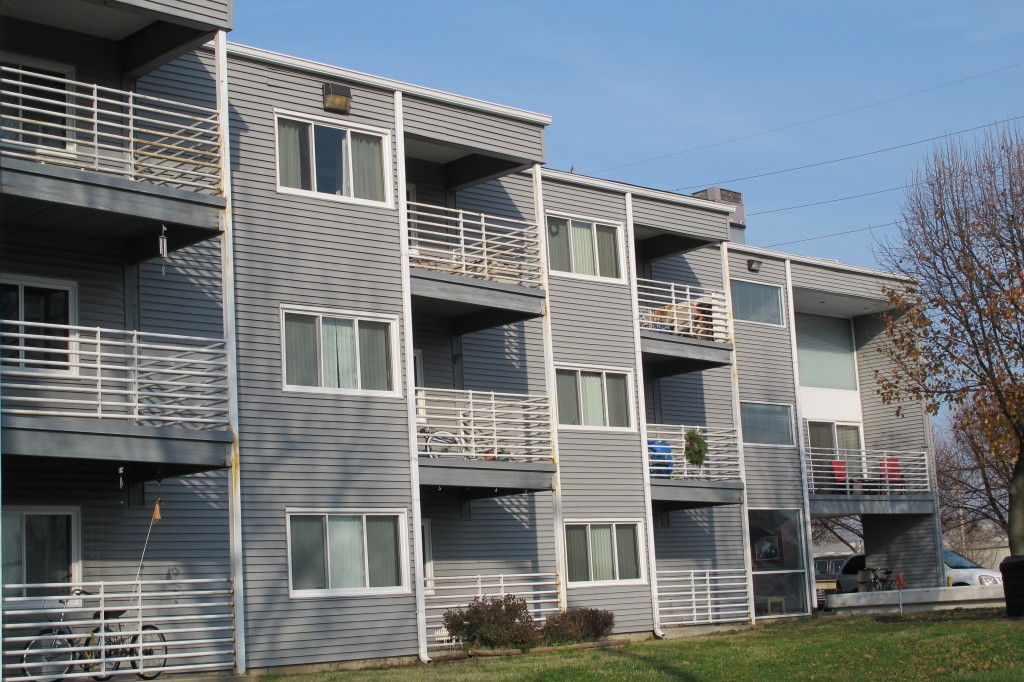 Apartments facing 2nd Street
Apartments facing 2nd Street
(photo by Ricky Berkey)
 Apartments facing 2nd Street
Apartments facing 2nd Street
(photo by Ricky Berkey)
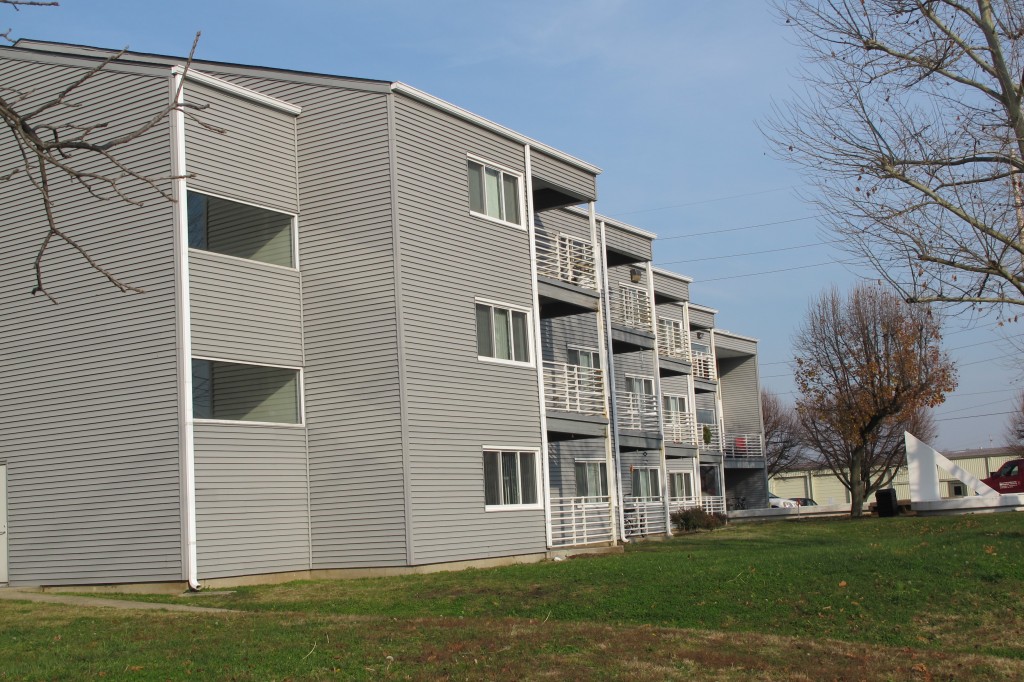 Apartments facing 2nd Street
Apartments facing 2nd Street
(photo by Ricky Berkey)
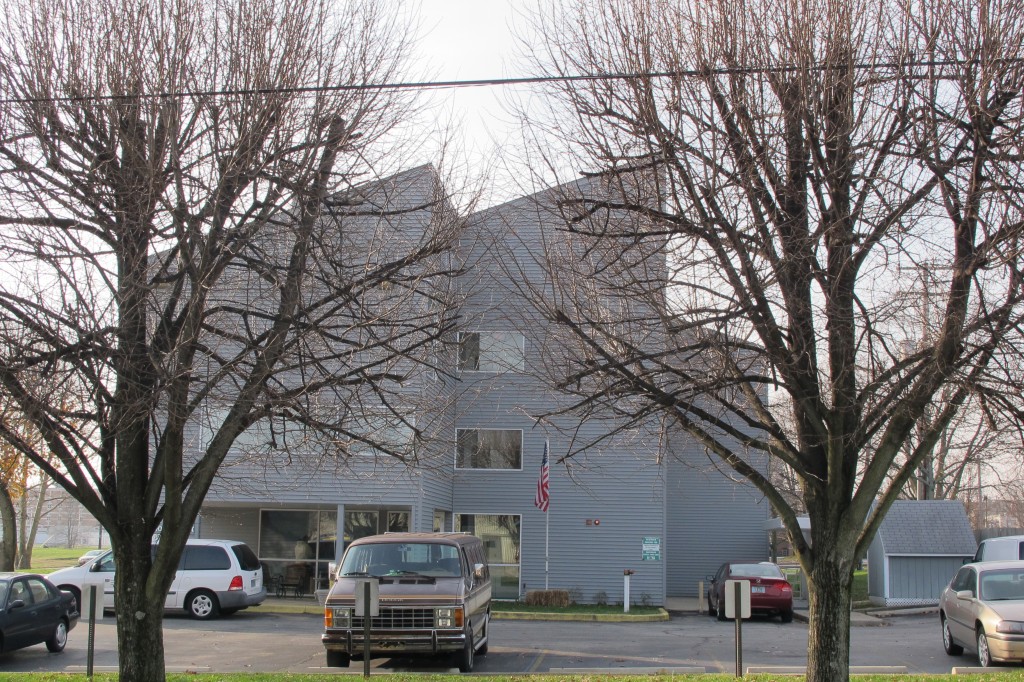 End view from Sycamore Street
End view from Sycamore Street
(photo by Ricky Berkey)
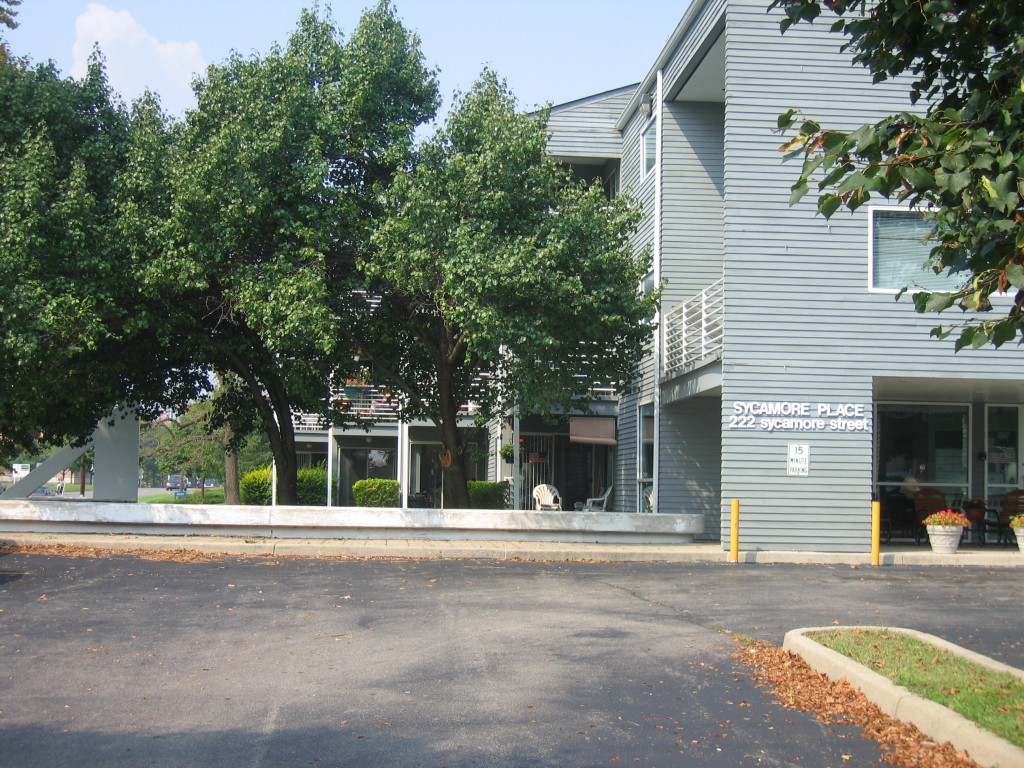 End view from Sycamore Street
End view from Sycamore Street
(photo by Ricky Berkey)
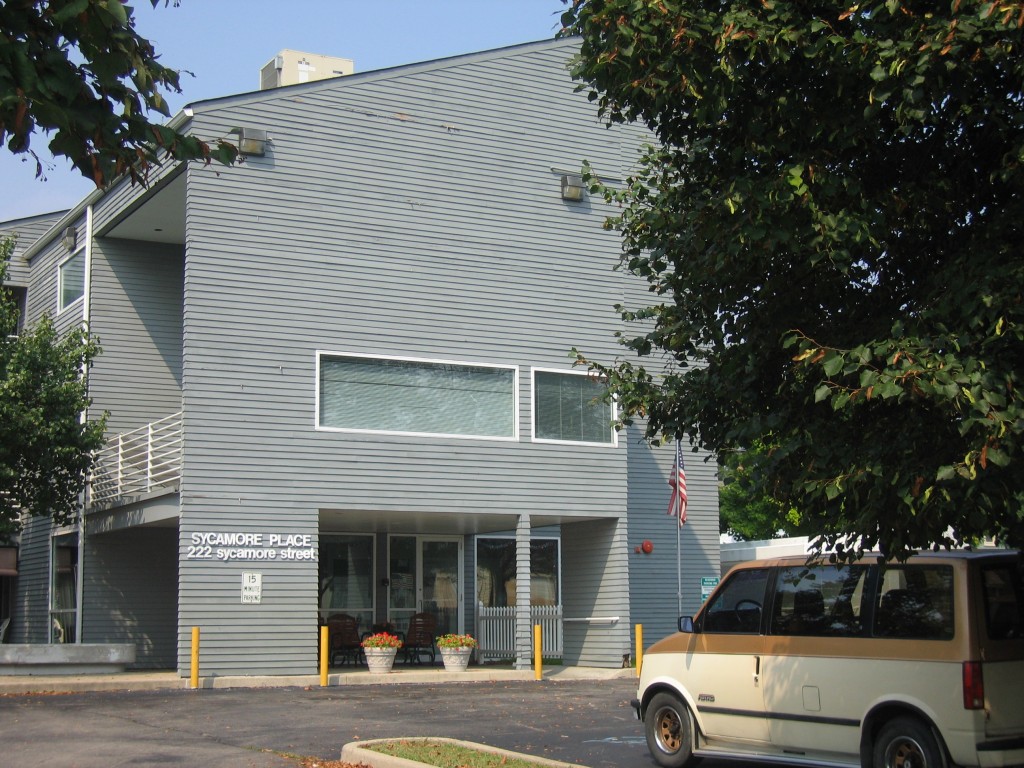 Main Entrance
Main Entrance
(photo by Ricky Berkey)
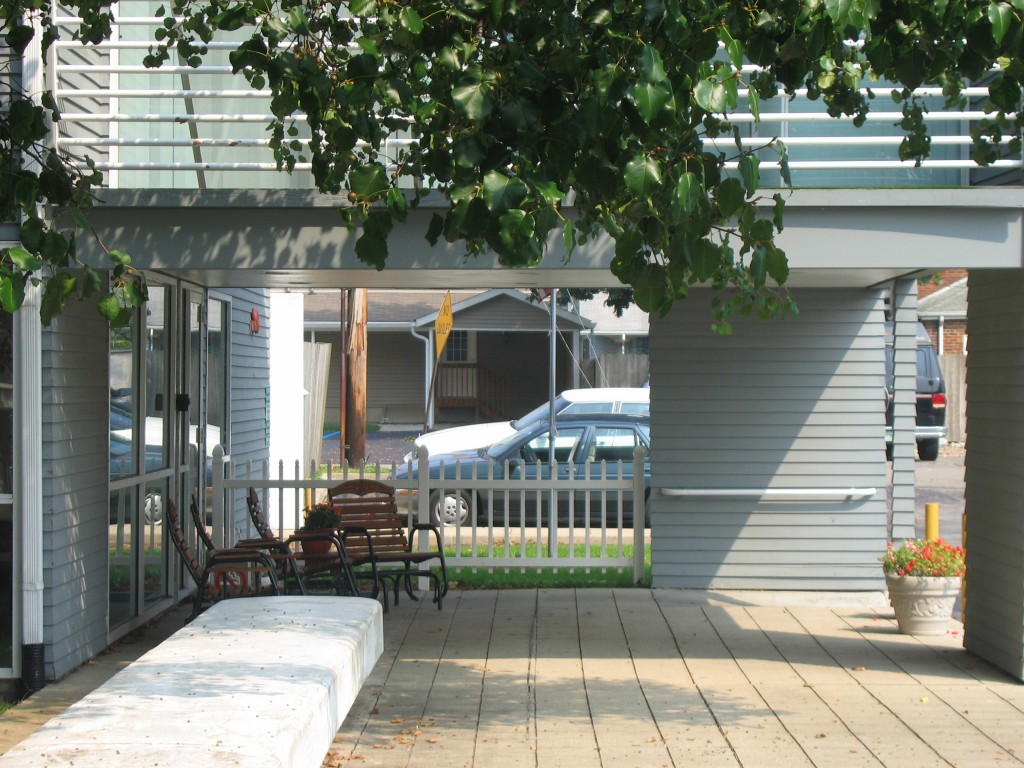 Underneath the main entryway
Underneath the main entryway
(photo by Ricky Berkey)
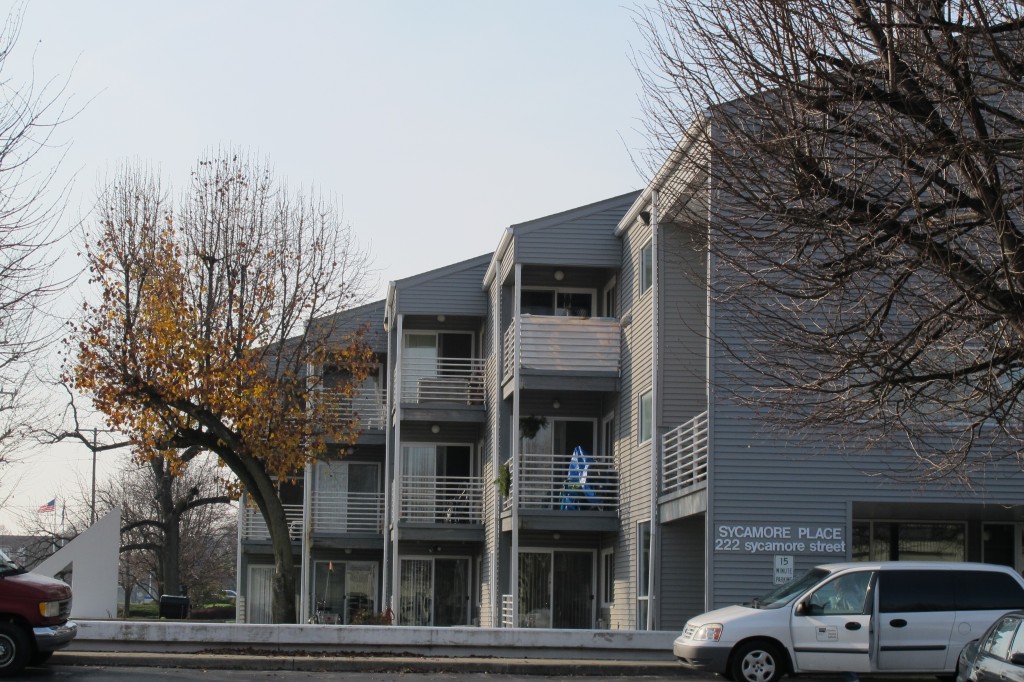 Side view from the main entrance
Side view from the main entrance
(photo by Ricky Berkey)
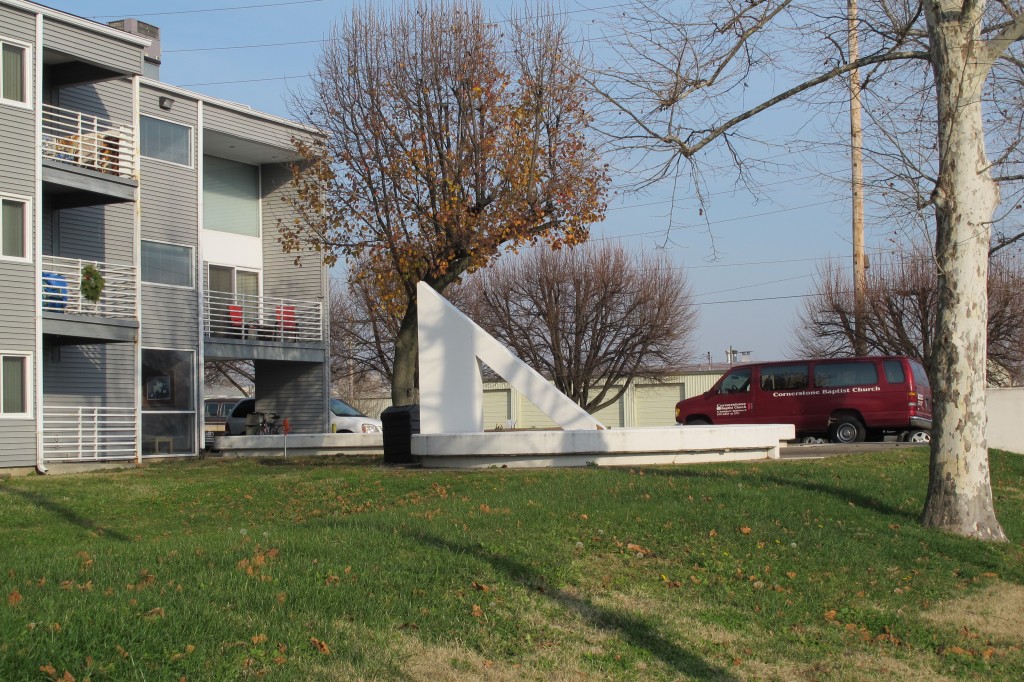 Concrete sundial sculpture
Concrete sundial sculpture
(photo by Ricky Berkey)
 Sundial sculpture with circular seating
Sundial sculpture with circular seating
(photo by Ricky Berkey)
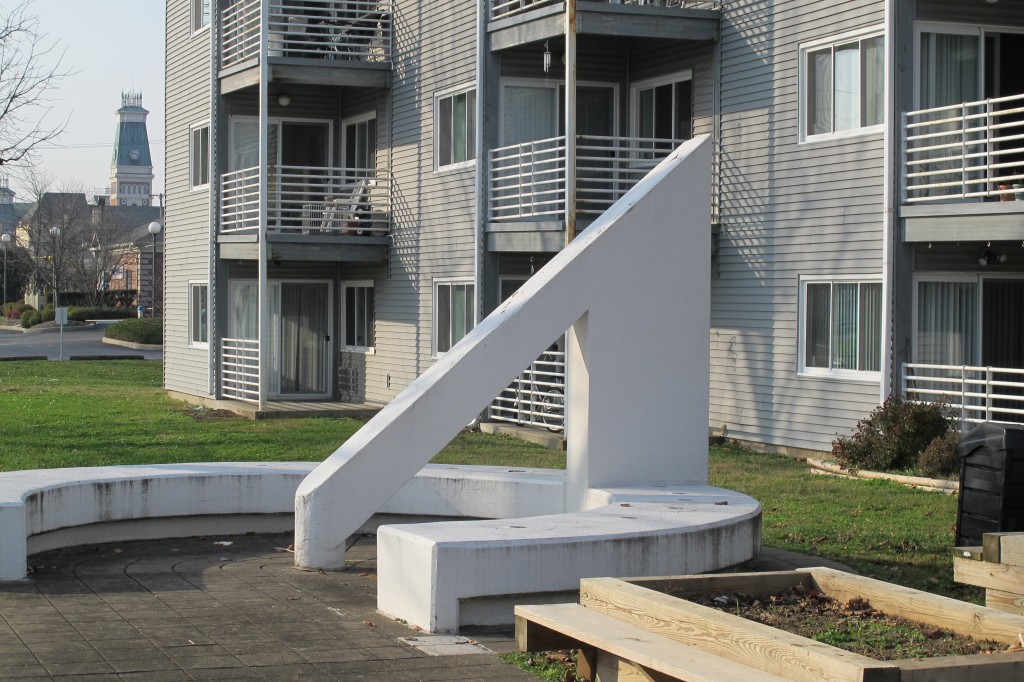 Sundial sculpture
Sundial sculpture
(photo by Ricky Berkey)
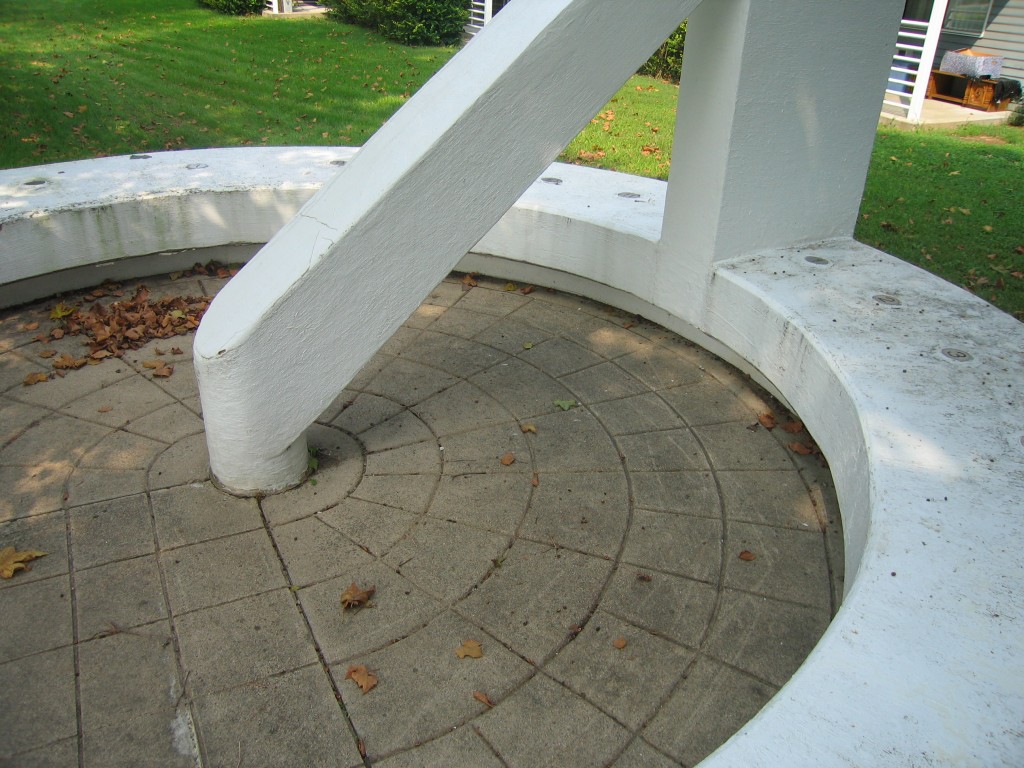 Closeup of sundial sculpture
Closeup of sundial sculpture
(photo by Ricky Berkey)
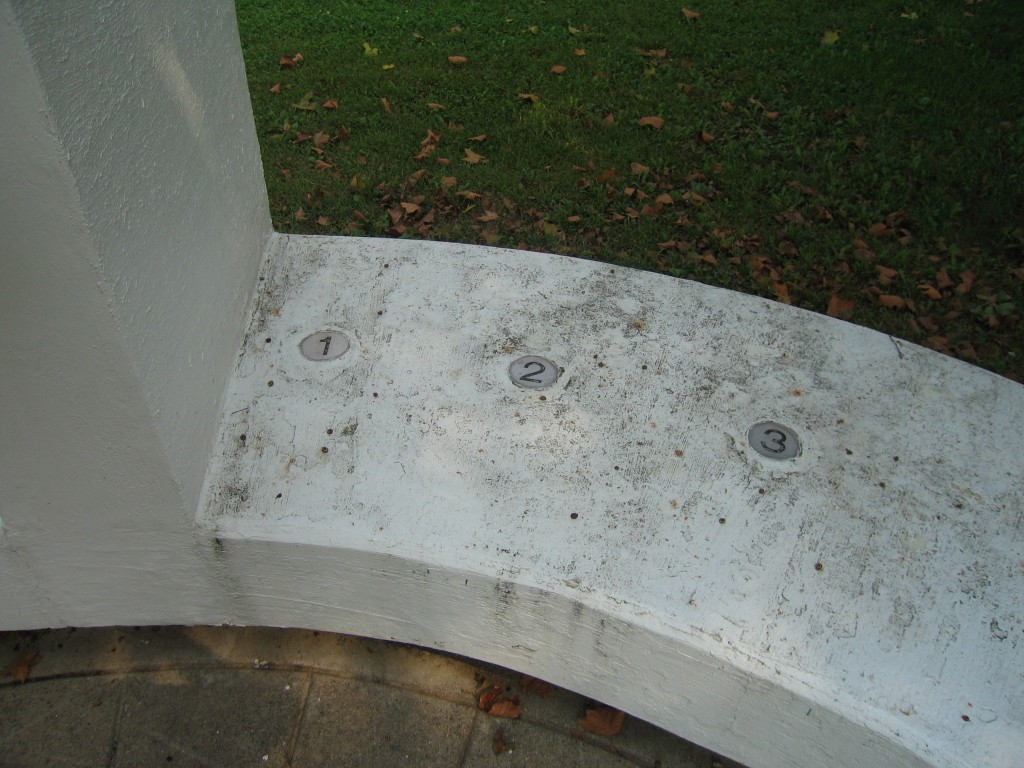 Numerals for the sundial on the bench
Numerals for the sundial on the bench
(photo by Ricky Berkey)
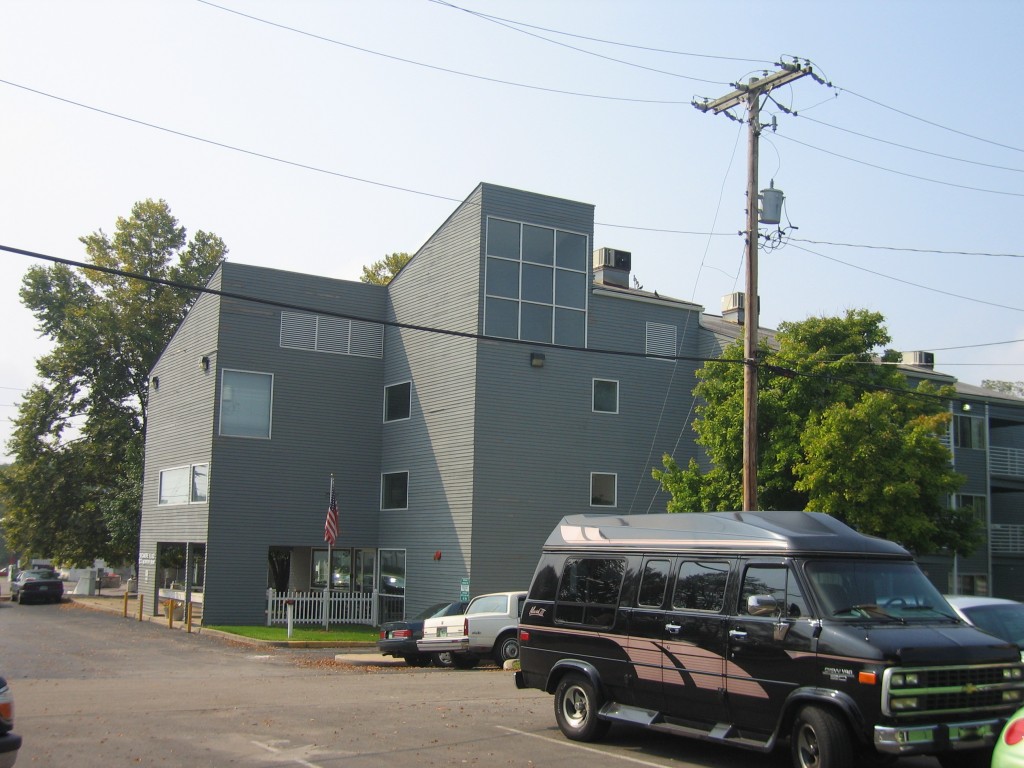 Main entrance from the rear
Main entrance from the rear
(photo by Ricky Berkey)
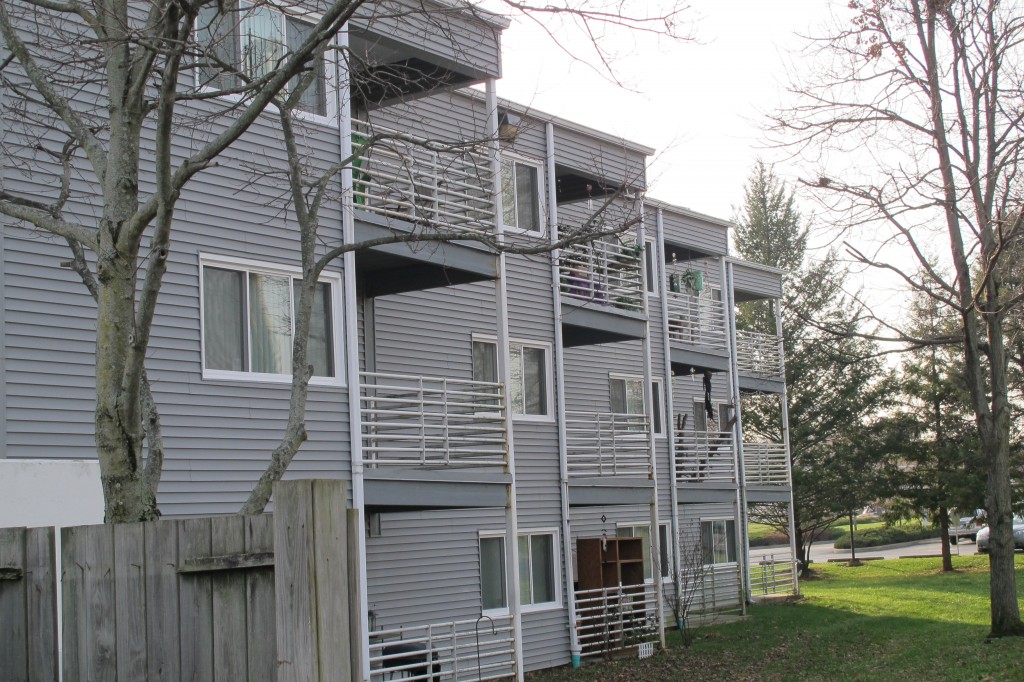 Apartments facing rear of the property, notice how the staggered balconies provides privacy between units (rare in public housing)
Apartments facing rear of the property, notice how the staggered balconies provides privacy between units (rare in public housing)
(photo by Ricky Berkey)
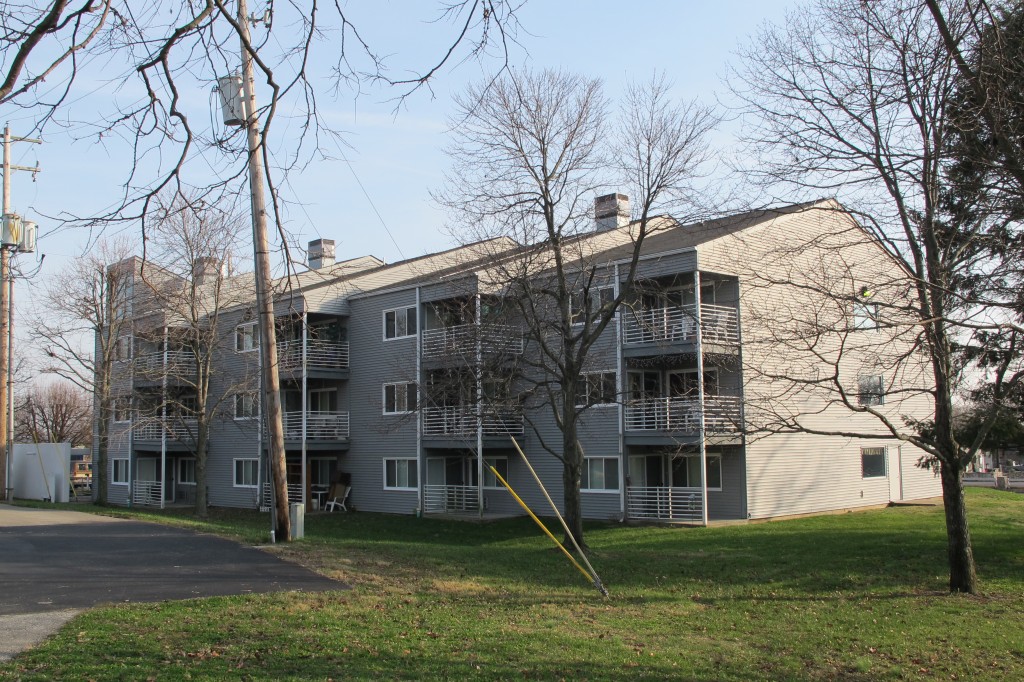 Apartments on the back side of the building
Apartments on the back side of the building
(photo by Ricky Berkey)
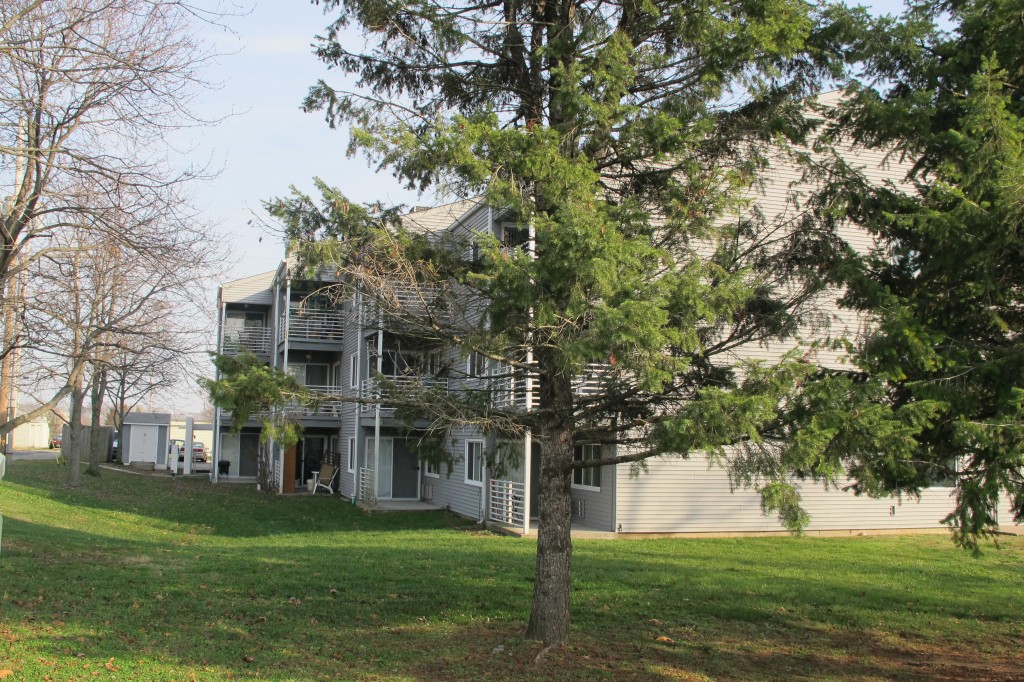 Apartments on the back side of the building
Apartments on the back side of the building
(photo by Ricky Berkey)
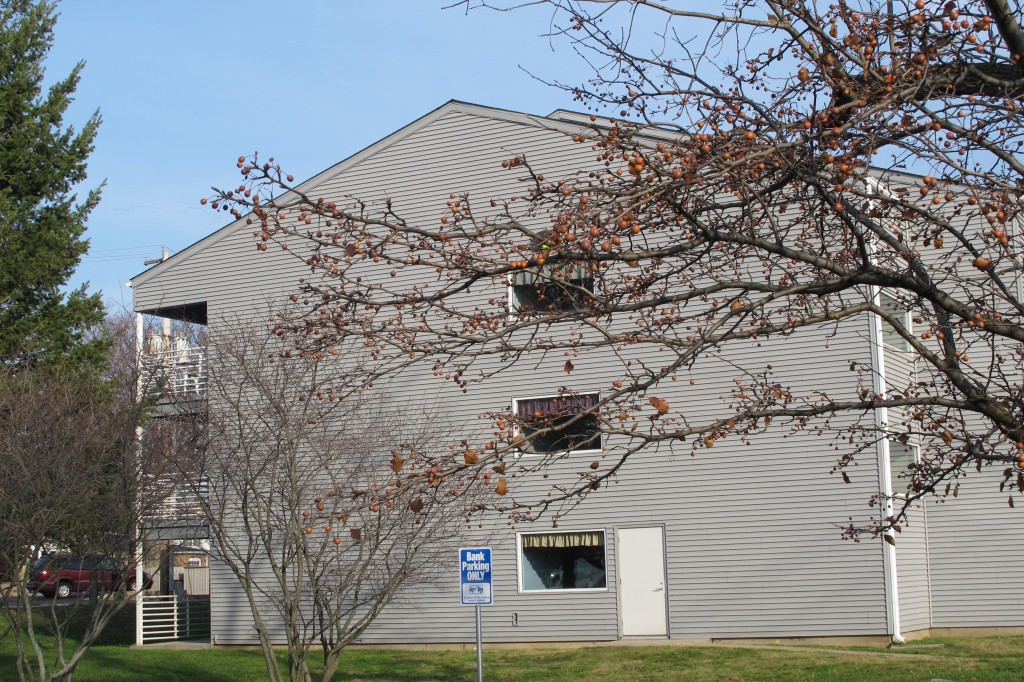 End view of building, large windows provide natural light into the inner corridors
End view of building, large windows provide natural light into the inner corridors
(photo by Ricky Berkey)
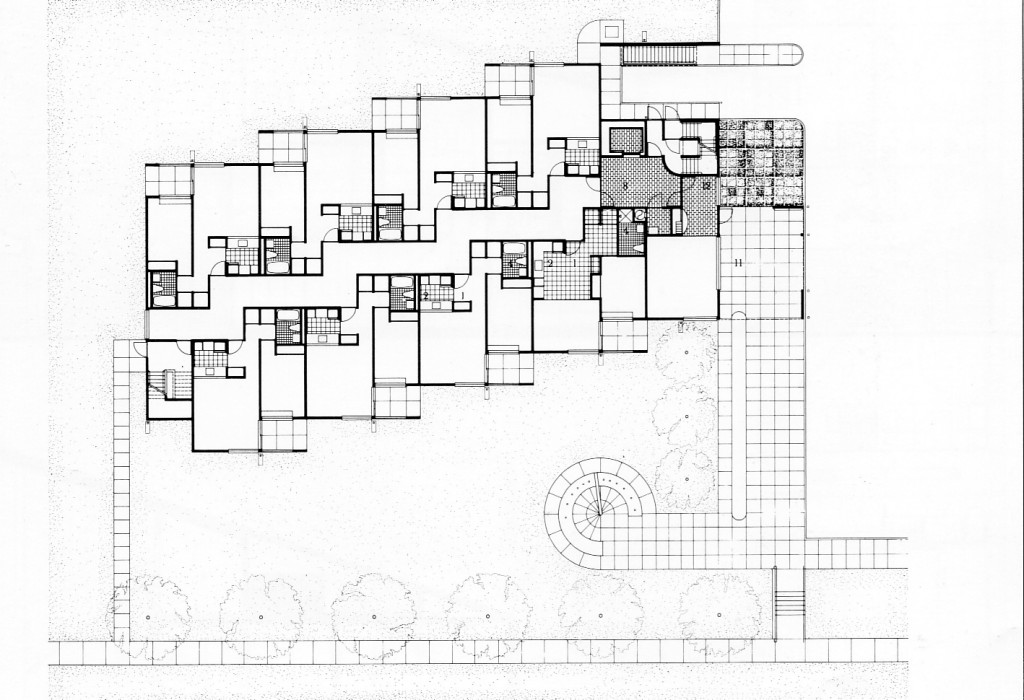 Ground floor plan
Ground floor plan
(used pending permission)
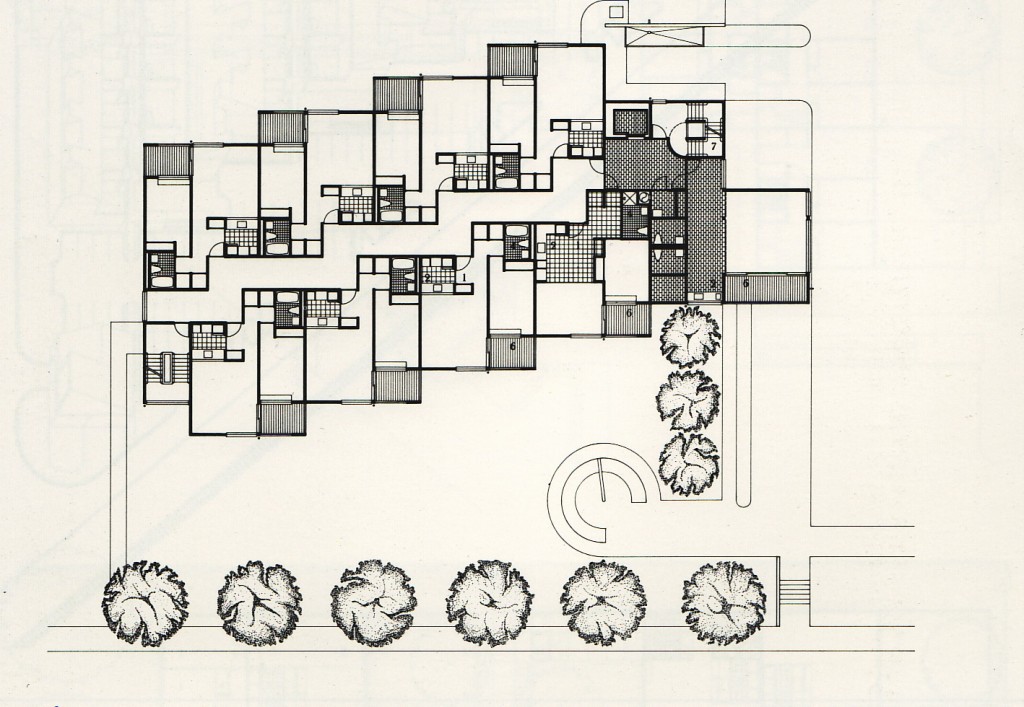 2nd floor plan
2nd floor plan
(used pending permission)
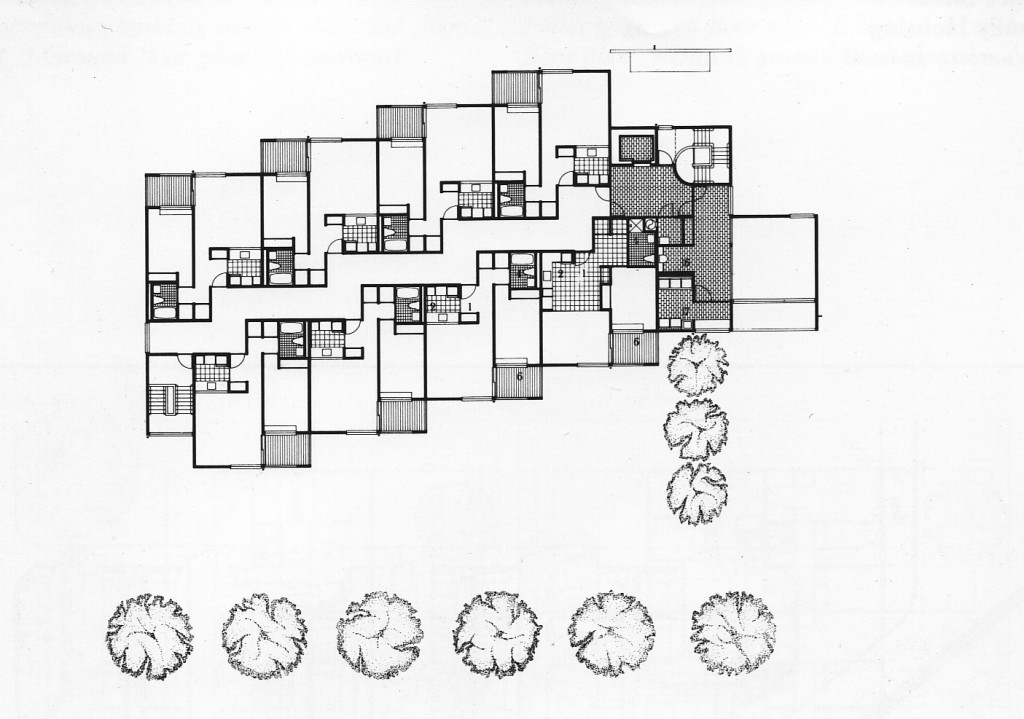 3rd floor plan
3rd floor plan
(used pending permission)
The Architects
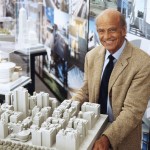 Charles Gwathmey – Gwathmey Siegel & Associates
Charles Gwathmey – Gwathmey Siegel & Associates
- Born on June 19th, 1938 in Charlotte, North Carolina
- Died on August 3rd, 2009 in NYC
- University of Pennsylvania
- Yale University School of Architecture (1962)
Charles Gwathmey was born in Charlotte, North Carolina in 1938. His parents were painter Robert Gwathmey and photographer Rosalie Gwathmey. He was educated at the University of Pennsylvania and received his masters degree in architecture at Yale. While at Yale he won the William Wirt Winchester Fellowship and a Fulbright Grant.
Gwathmey was part of a generation of architects who were proponents of the “high Modernist” style developed in the early 20th century by Le Corbusier and others. He was one of the five architects identified as the “New York Five” in 1969. He is probably best known for high end residential projects for a series of wealthy and often famous clients such as Faye Dunaway and Steven Spielberg. It was ironic then that he created two public housing projects in architecture rich Columbus, Indiana. As his contemporaries were shifting to historicism or post-modernist stylings, Gwathmey remained loyal to the tenets of modernism.
He formed his first partnership with Richard Henderson in 1966. He developed a reputation while still in his twenties for a house designed for his parents on Long Island. Completed at a cost of only $35,000, the Gwathmey house attracted throngs of visitors and was consistently named one of the most influential buildings of the modern era.
Gwathmey Siegel & Associates was founded with partner Robert Siegel in 1968. They had first met as students at the High School of Music & Art in Manhattan. The firm maintained a thriving residential practice while also designing large scale projects for museums, schools and private developers. One of their most famous (as well as most controversial) designs was the renovation and addition to Frank Lloyd Wright’s Guggenheim museum in NYC.
From 1965 through 1991, Gwathmey taught at the Pratt Institute, Cooper Union for the Advancement of Science and Art, Princeton University, Columbia University, the University of Texas, and the University of California at Los Angeles. He also briefly was a visiting professor at Yale and Harvard.
Gwathmey won the Brunner Prize from the American Academy of Arts and Letters in 1970 and in 1976 was elected to the Academy. In 1983, he won the Medal of Honor from the New York Chapter of the American Institute of Architects and in 1985, he received the first Yale Alumni Arts Award from the Yale School of Architecture. In 1988 the Guild Hall Academy of Arts awarded Gwathmey its Lifetime Achievement Medal in Visual Arts followed in 1990 by a Lifetime Achievement Award from the New York State Society of Architects. Gwathmey Siegel & Associates received the American Institute of Architects highest honor: the Firm of the Year Award in 1982 for “approaching every project with a fresh eye, a meticulous attention to detail, a keen appreciation for environmental and economic concerns and a strong belief in collaborative effort.”
Gwathmey was known as a dashing figure, wearing tailored suits and shoes. He had a preference for black sports cars stripped of extraneous details. He lived in a Manhattan apartment in which he designed the interior. Charles Gwathmey passed away in 2009 after battling cancer for several years. He was 71. Gwathmey Siegel & Associates continues as an active firm with Robert Siegel still playing an major role.
Selected Charles Gwathmey Projects
Gwathmey House – Long Island, New York (1966)
Whig Hall Student Center at Princeton University – Princeton, New Jersey (1975)
Sycamore Place Elderly Housing – Columbus, Indiana (1982)
Pence Place Family Housing – Columbus, Indiana (1984)
Westport Library – Westport, Connecticut (1986)
Contemporary Resort (Convention Center addition) at Disney World – Orlando, Florida (1991)
Guggenheim Museum (renovation and addition) – NYC (1992)
Museum Of Contemporary Art – North Miami, Florida (1995)
Basketball Hall of Fame – Springfield, Massachusetts (2002)
Astor Place Tower Condominiums – NYC (2005)
 Jacob Alspector
Jacob Alspector
- Brooklyn Technical High School – Brooklyn, New York (1966)
- Cooper Union for the Advancement of Science and Art (1972)
- Institute for Architecture and Urban Studies
Growing up in NYC, Jacob Alspector became enchanted with architecture at the age of 11 when he discovered a library book on the recently deceased Frank Lloyd Wright and visited Wright’s NYC masterpiece, the Guggenheim Museum. Later attending Brooklyn Technical High School, he began an architectural program which continued at the Cooper Union for the Advancement of Science and Art. While at Cooper Union he studied under notable architects John Hejduk, Peter Eisenman, Charles Gwathmey, Richard Meier and others. He also attended the Institute for Architecture and Urban Studies taking Colin Rowe’s lectures in Renaissance and Modern Architecture.
He began his career as an intern with Giorgio Cavaglieri in 1971 moving to The Ehrenkrantz Group in 1973. He was an associate partner with Gwathmey Siegel & Associates from 1977-2002 when he started his own firm, Alspector Architecture. He has taught at City College of New York and Carnegie Mellon University. With Gwathmey Siegel & Associates, he was involved with the two public housing projects built in Columbus, Indiana during the 80’s.
Links/References
Gwathmey Siegel & Associates: the firm’s current website
Alspector Architecture: Jacob Alspector was the senior design associate on the Columbus Gwathmey Siegel projects:
City of Columbus: official City of Columbus website
Columbus Indiana Architectural Archives
Columbus Indiana Architecture Digital Archives: A small portion of the Columbus Indiana Architectural Archives available online from the IUPUI digital library
3D Models of Columbus Architecture Executed in Google SketchUp:
The Republic Newspaper – Columbus, Indiana newspaper
Bartholomew County Public Library
Historic Columbus Website – David Sechrest’s tribute to Columbus History
Historic Columbus Message Board – a companion interactive forum to the David Sechrest historical website
Bartholomew County Historical Society
 Click HERE for a Calendar of Upcoming Events in the Columbus Area.
Click HERE for a Calendar of Upcoming Events in the Columbus Area.
Click HERE for information about Tours of Columbus Architecture and Design including the Miller House.
 Ricky Berkey
Ricky Berkey
Email me: rickyberkey@gmail.com
